Then & There: The Art of Ownership
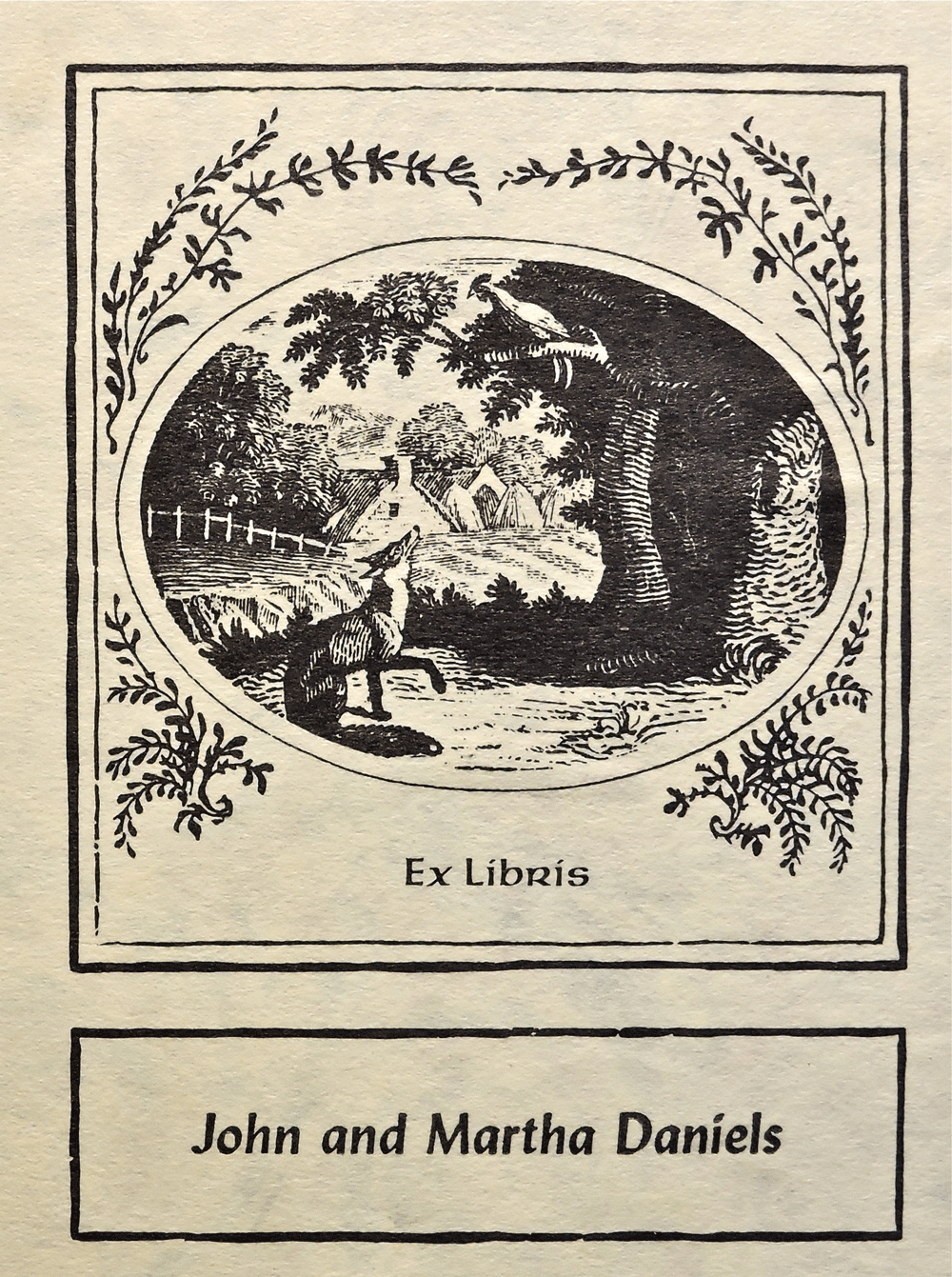
By Richard Hooper

The record or history of ownership of art, antiques and books is often referred to as “provenance.” Regarding books, John Carter (ABC for Book Collectors, Knopf: 1978) described it as, “The pedigree of a book’s previous ownership.” With books, provenance can take on its own art form in the guise of finely engraved, lithographed, or otherwise rendered ownership labels known as bookplate or ex-libris (“from the books of…”) that are usually pasted onto the front endpapers.
The basic purpose of a bookplate is to show ownership and in its simplest form is merely the collector’s name. One of the most common is a coat-of-arms. Beyond these basics, bookplates can also depict scenes based on the interest of the collector—including, of course, those of a sporting nature.
Keeping books in one’s own library and not having them run riot and kenneling up on someone else’s shelves is comically implied in the Victorian book-plate of Robert L. Emory, who is about to, or has, lost control of his horse. Hopefully, he was better able to manage his books. (This scene is open to other interpretations, though. Perhaps he was just having a jolly good time galloping downhill, losing his top hat and with his crop flying out behind him.)
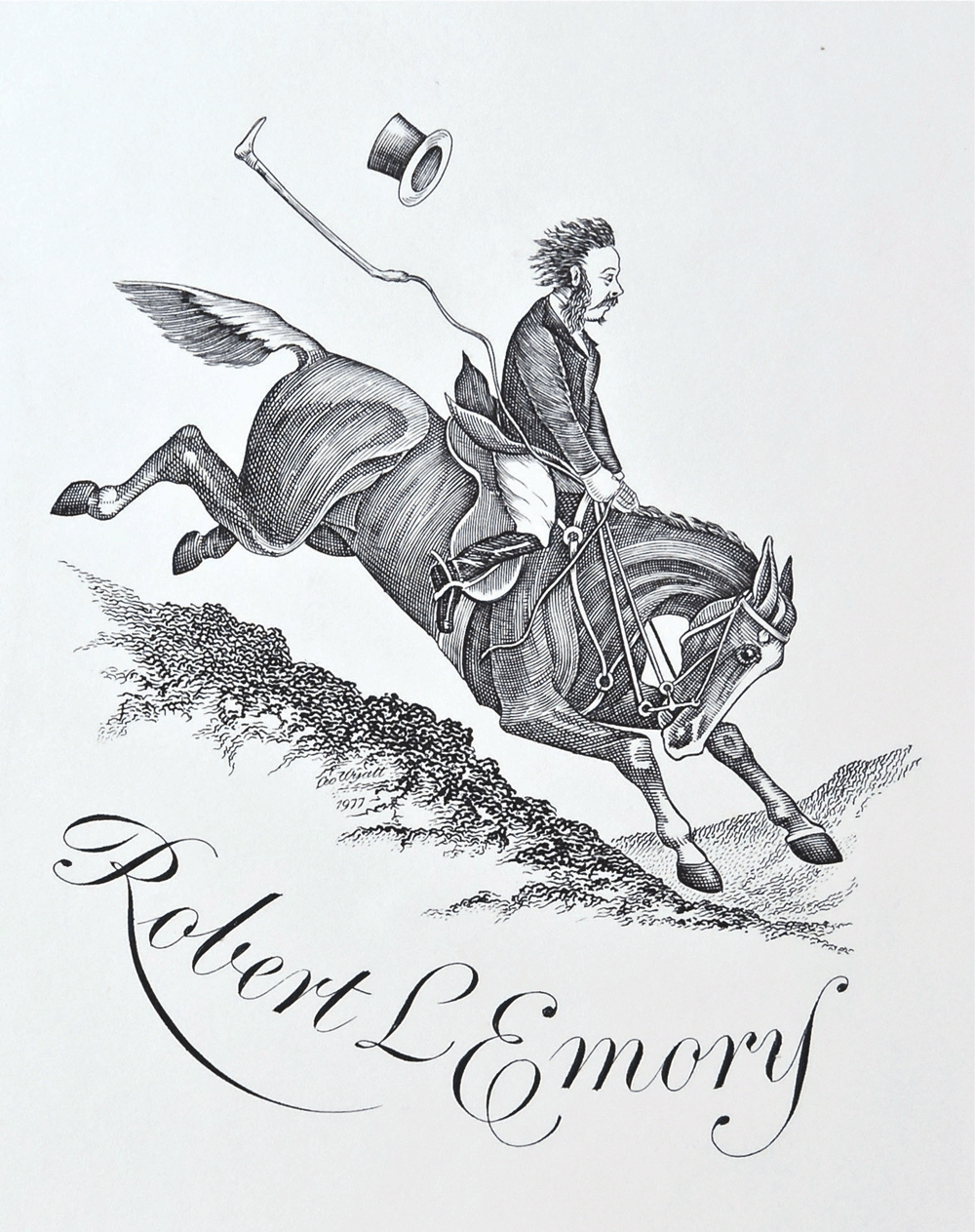
The usually simple use of one’s name can be artfully elaborated, as was done by Ernest R. Gee, the great New York dealer of sporting books. His bookplate read “EX LIBRIS / E.R. GEE,” but it was stamped in gilt on leather and surrounded by gilt borders. In the center is the head of a horse, also stamped in gold. Even though it is very small (about 1 1/2 x 1 1/8 inches), it looks like the front cover of a fine leather binding.
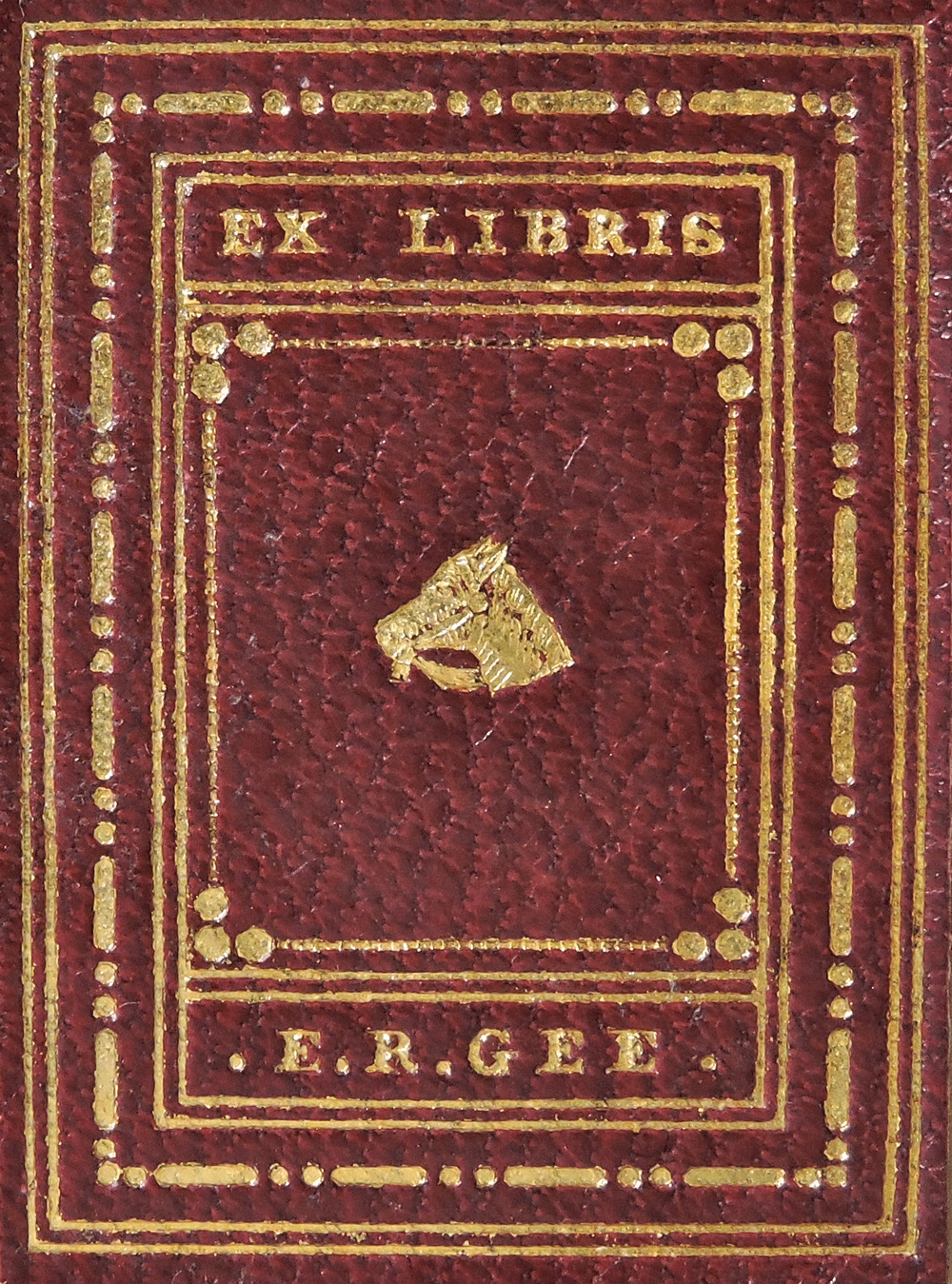
One of the collectors that Gee would have catered to was the renowned sportsman Harry Worcester Smith. Smith’s bookplate has a central scene of steeplechasing and is surrounded by emblems of foxhunting, angling, shooting and other sports. It is dated 1921 and signed with the initials S.L.S. for Sidney Lawton Smith. Sidney Smith, designer, artist and engraver, also created bookplates for the Boston Library, Harvard College Library and the Library of the Metropolitan Museum of Art.
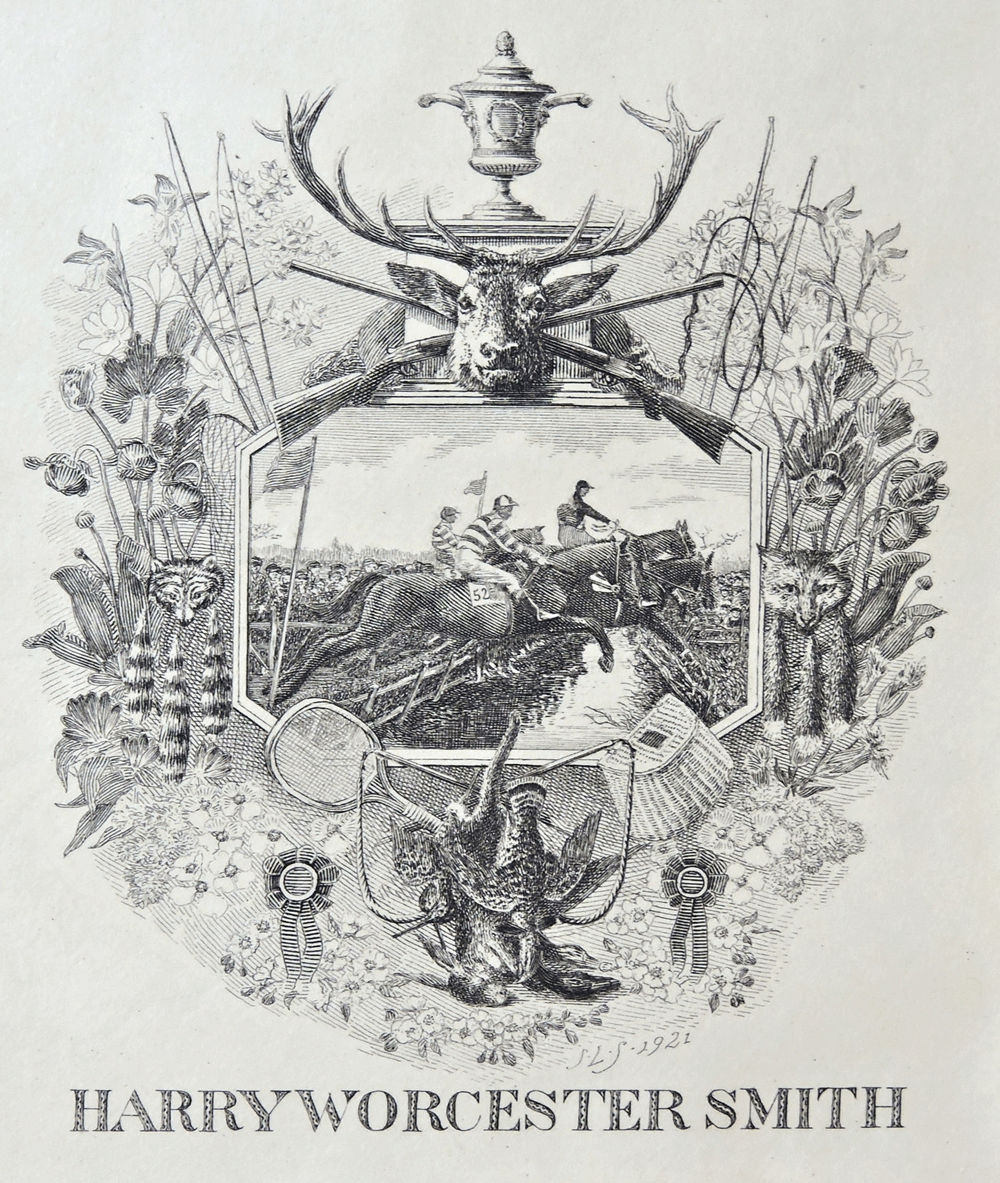
The sporting books belonging to His Royal Highness The Prince Henry, Duke of Gloucester (1900-1974) contained his armorial book-plate and, because everyone knew who he was, simply the name “Gloucester.” Many of the books relating to foxhunting in the very large Gloucester collection came from another collection formed by Carl Franz Georg Richard Schwerdt and his wife Mathilde and contained the Schwerdt book-plate as well.
The Schwerdts published a catalog, Hunting, Hawking and Shooting, of their massive collection, comprising four volumes (three published in 1927 and the fourth in 1938). Printed on hand-made paper, with immaculately detailed descriptions and richly illustrated with facsimiles, it is a magnificent work, limited to 300 sets. Their unusual, round bookplate illustrated the themes of the collection.
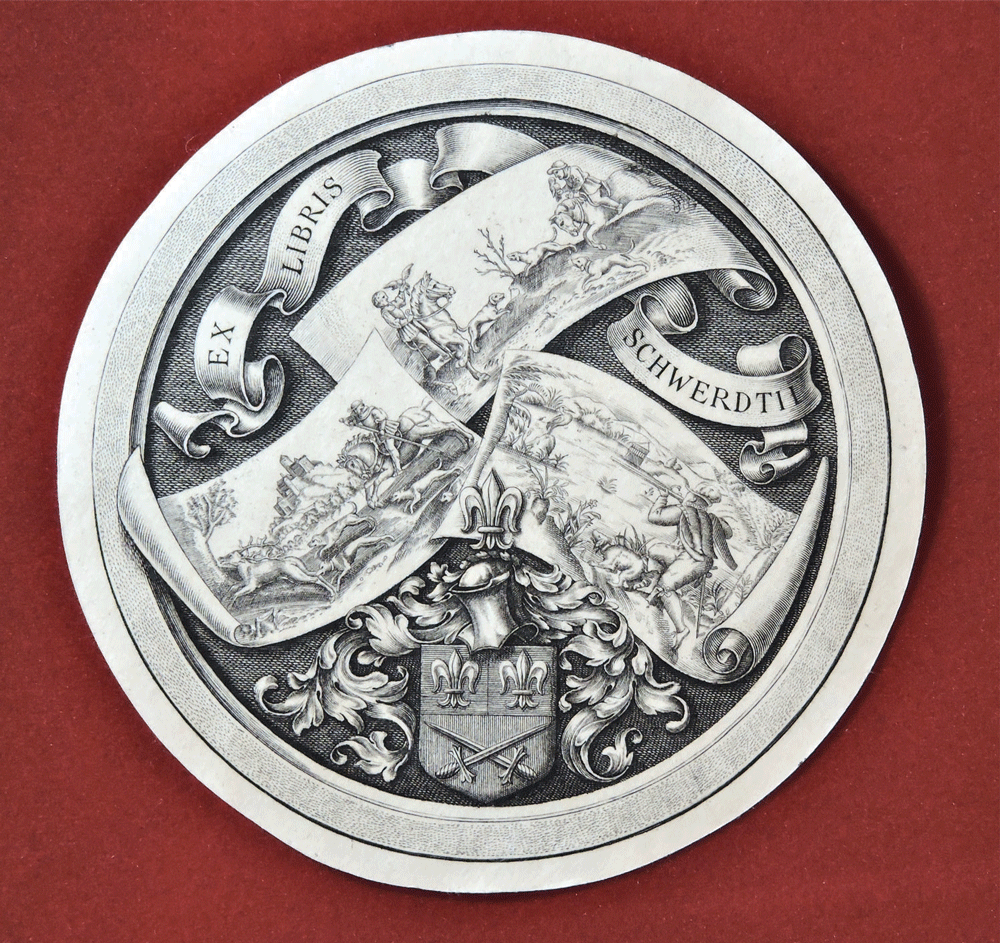
As with the Schwerdt/Gloucester books, it is not unusual for a book to contain multiple bookplates. A fine example of this is a copy of the first edition of Peter Beckford’s Thoughts on Hunting, 1781. It first contains a handsomely engraved ex-libris designed and engraved by John Shirlow and features the head of the horse Linass. The horse and book, at some point, belonged to R. M. Chirnside, whose name is engraved at the top. However, Chirnside’s name and most of Linass’s portrait are not readily visible. A subsequent owner, Charles E. Dunlap, applied his intriguing bookplate of sporting scenes, partially covering that of Chirnside’s. Dunlap, however, was polite with his application; he pasted his bookplate only at the top edge so that it can be lifted as if on a hinge. There is a third bookplate, on a separate page, in this book as well. It shows a fox in a scene from Aesop’s Fables. It indicates that it is part the extensive John and Martha Daniels collection, which was donated to the National Sporting Library & Museum.
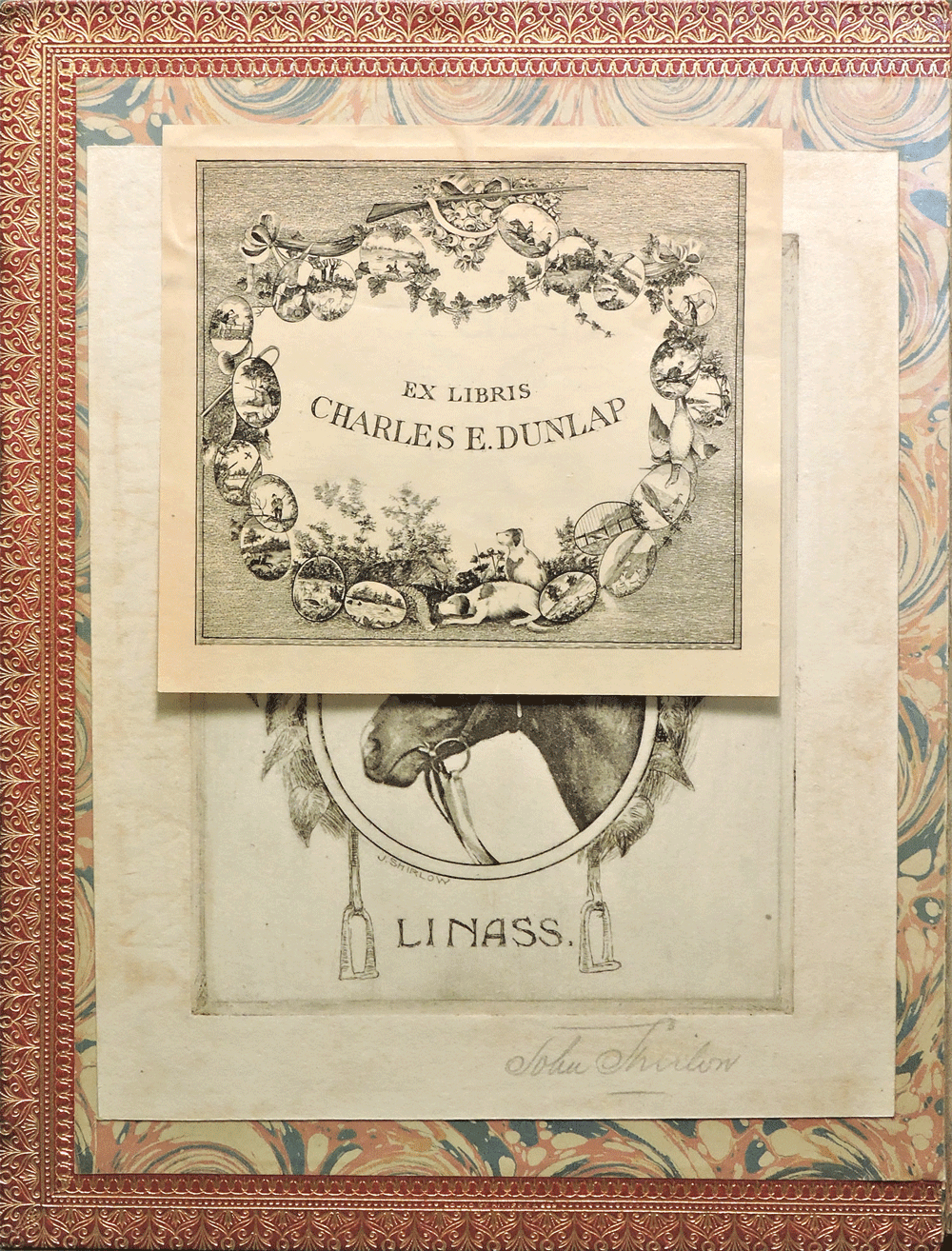
Well-known artists occasionally design bookplates, such as one engraved by Paul Brown for Lester Karow, depicting one of his favorite horses.
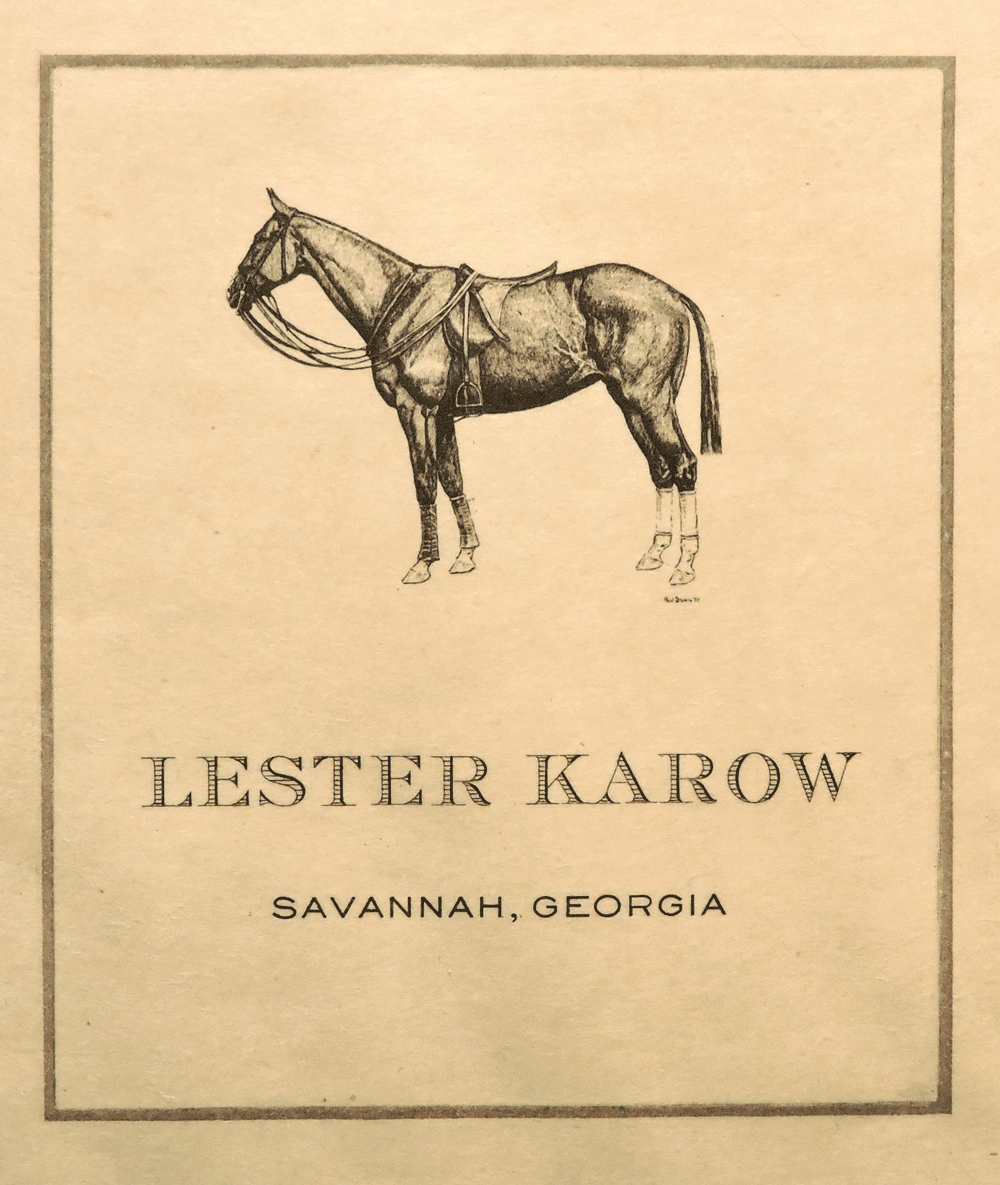
Writer and book-reviewer Francis McIlhenny Stifler had a very clever bookplate design that incorporated his writing and sporting interests. A man is jumping a three-rail fence; the body of the horse he is riding is a book; pens and pencils make up the rails, with posts on both sides propped up by a pair of typewriters.
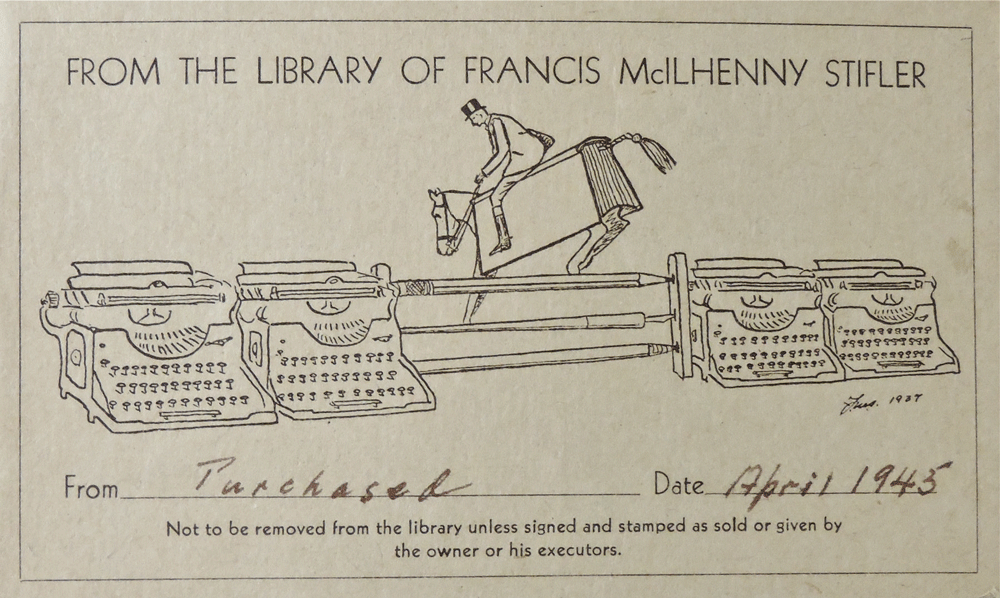
Francis Stifler.
Clever, aesthetic and curious bookplates always add an aura to a book. They are like a small, intimate touch. ML


